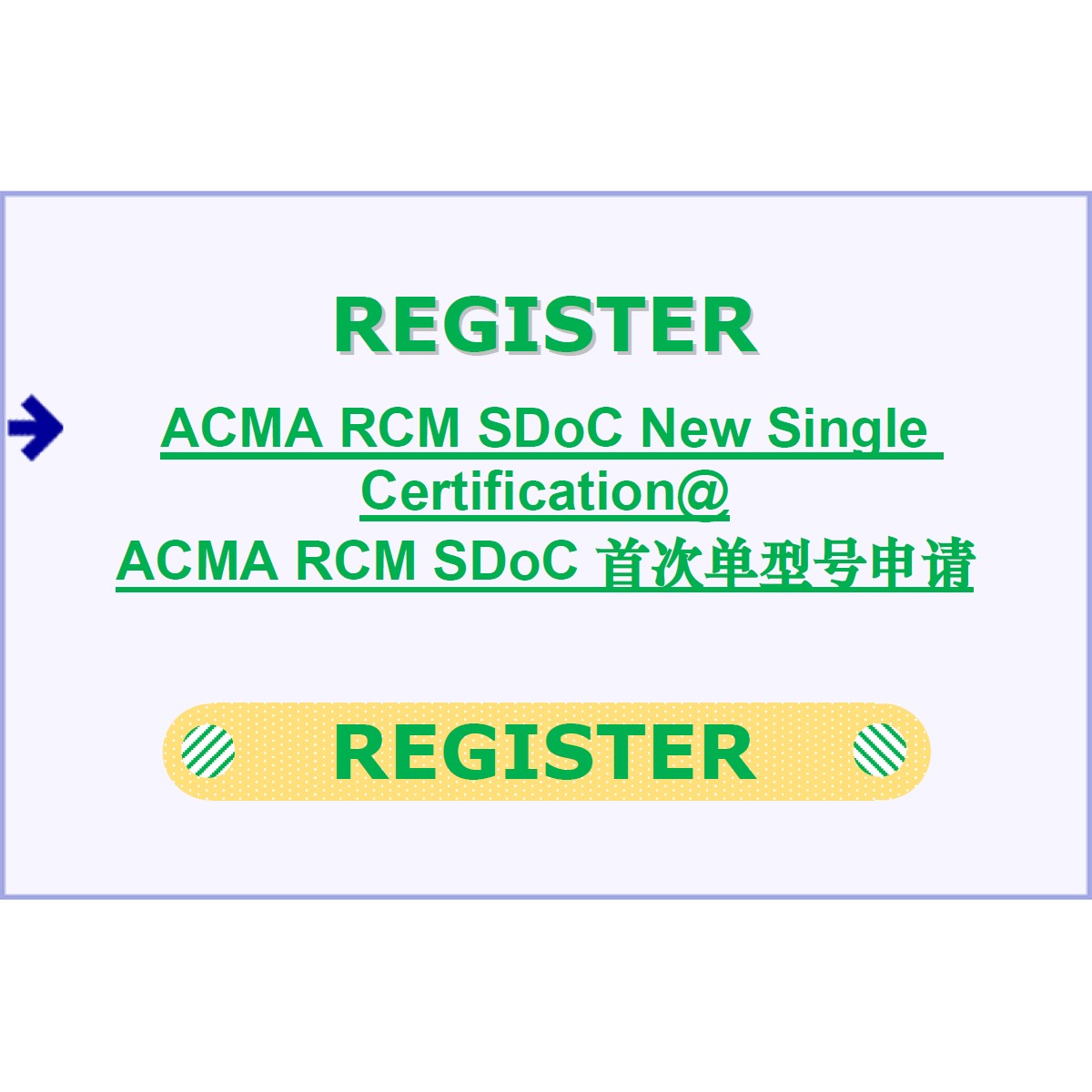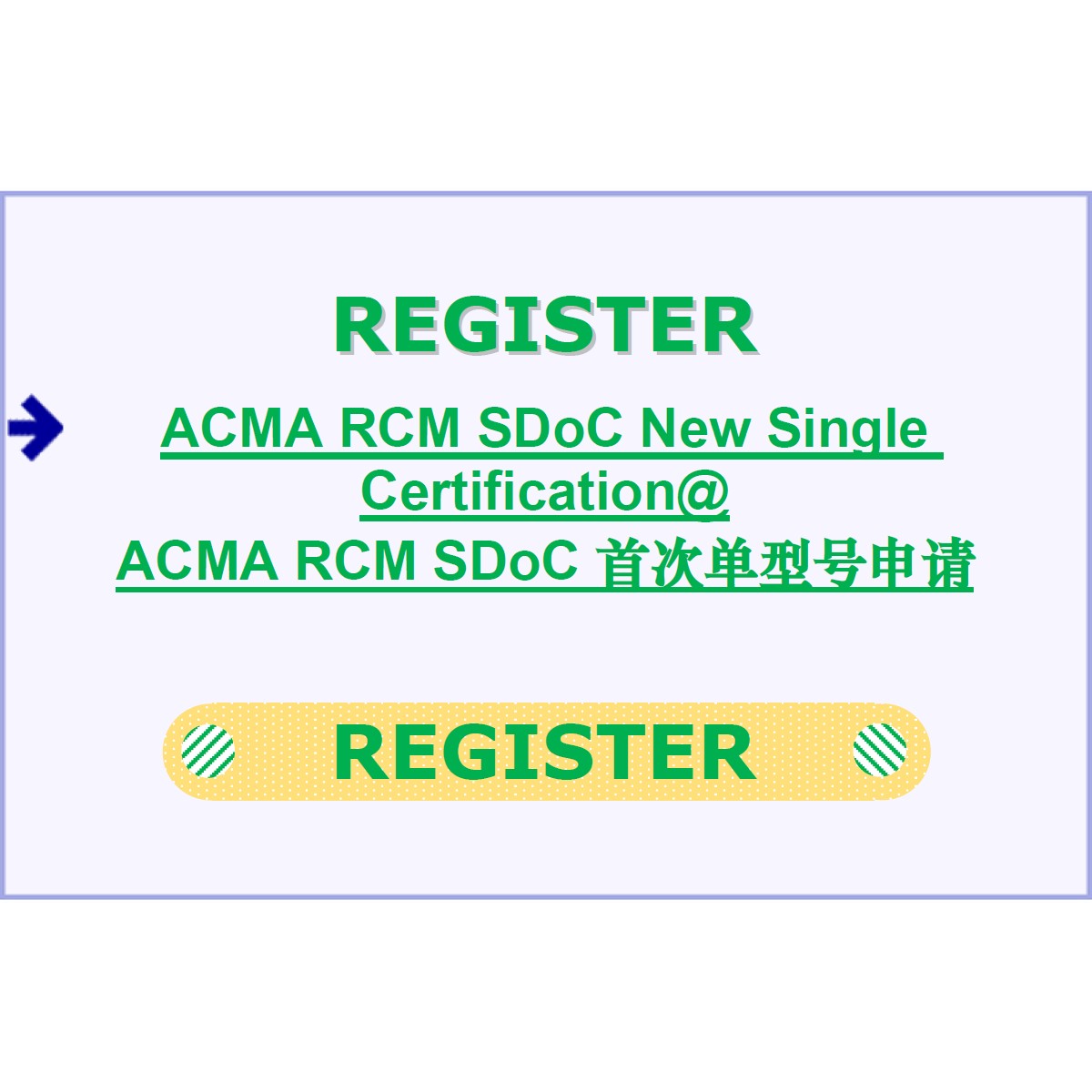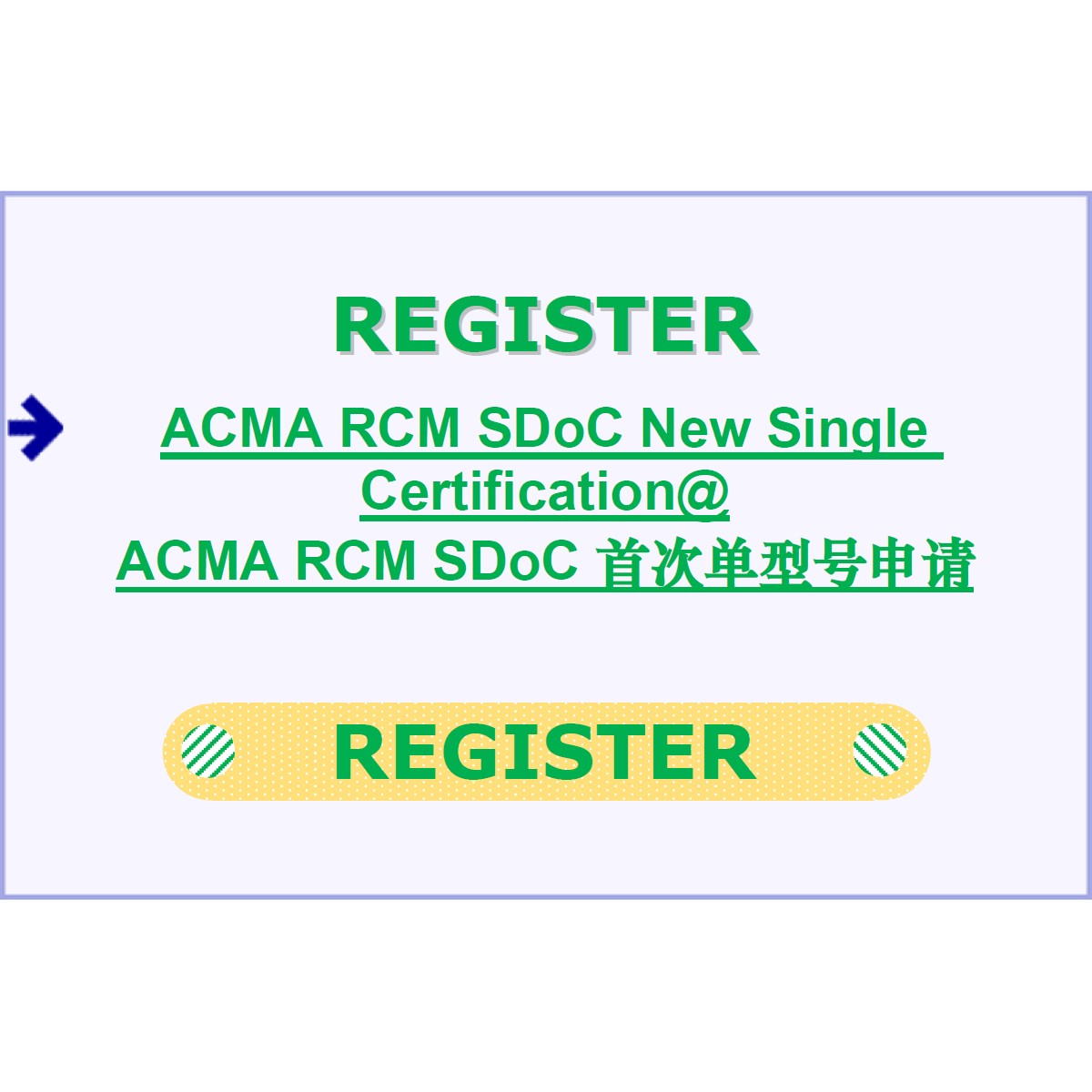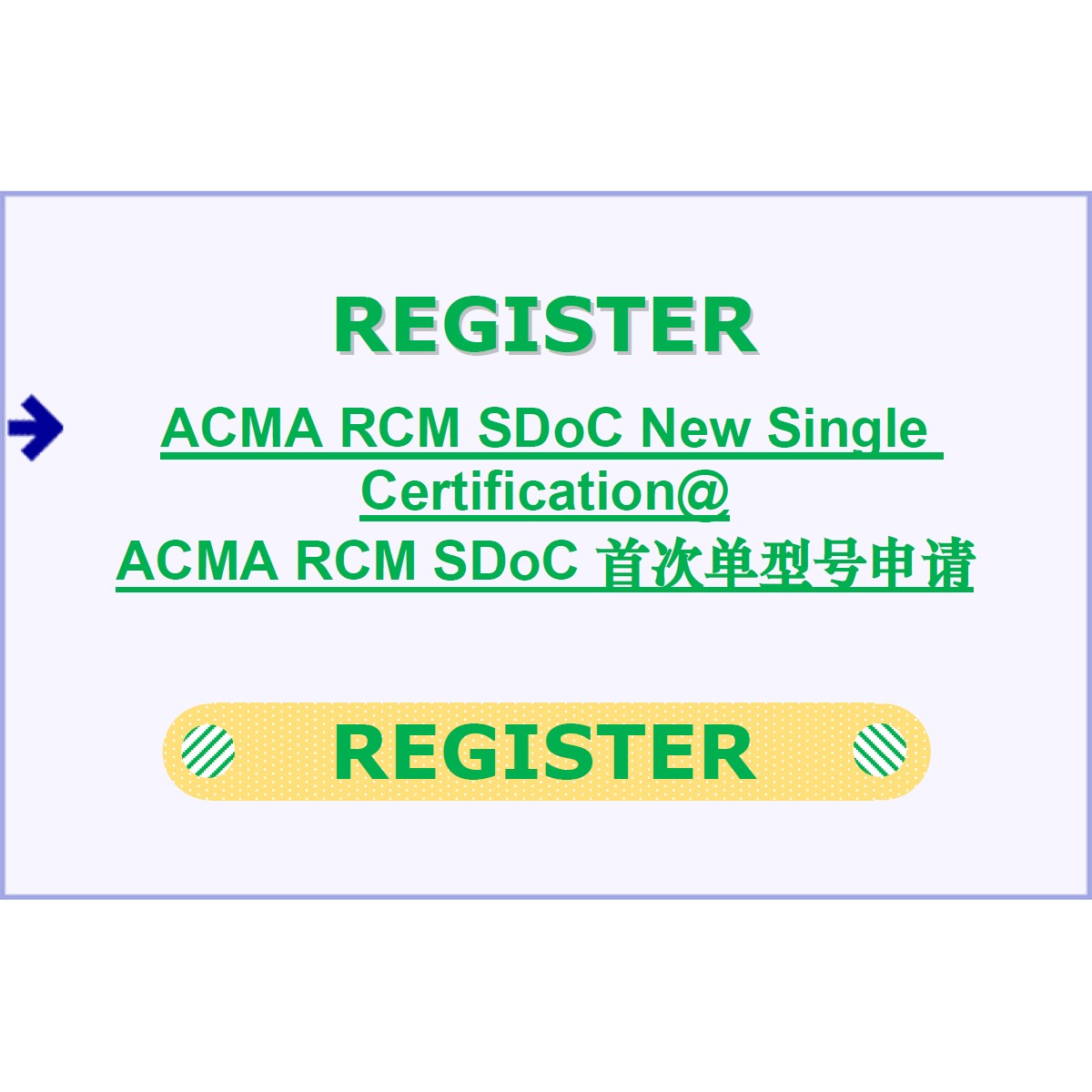Australia RCM Guide for Telecom Device
Australia Market Access for Telecom Device
Telecom Approvals
A certification by the Australian Communications and Media Authority (ACMA) equates to Australian market approval for manufacturers of wireless technology products.
The main task of ACMA is to regulate telecommunications matters in the country by means of laws, regulations, standards, and legal norms.
The part of this task also relates to the approval of products with radio technologies for the Australian market. Such ACMA certification is therefore the decisive prerequisite for manufacturers to be able to market their products in Australia. These include the need for local testing for certain equipment on site in Australia or the involvement of a local representative to carry out and complete the certification process.
Under ACMA the following categories of products has to be approved:
telecommunications customer equipment (CE) and customer cabling (CC)
radiocommunications devices
electromagnetic compatibility (EMC) performance of electrical and electronic devices, vehicles, and devices with internal combustion engines
electromagnetic energy (EME) from radio transmitters, that are devices that are only radiocommunications transmitters are not subject to the EMC arrangements
An RCM compliance label requires to be placed on a device that has been certified by the supplier as meeting any applicable standards that apply to that device. There are requirements for the RCM compliance label including durability, legibility, positioning, font, and size.
REGULATORY AGENCY
- Australian Communications and Media Authority (ACMA)
REGULATIONS FOR TELECO
- Products are classified into 3 levels depending on the degree of impact non-compliance has on the safety of persons or the integrity of a telecommunications network or facility – Level 1 having limited impact and Level 3 having risk of adverse impact.
- Manufacturers are required to sign a DoC and hold a product description.
- Regulated products should also be affixed with the RCM Mark.
GUIDELINES
- A local representative is required to apply to use the RCM Mark.
- Manufacturers of Level 2 and 3 products are also required to hold a test report or Technical Construction File.
- The test report for Level 3 products must be from an accredited test laboratory.
List of Standards
Specifies requirements for telephone equipment that connects to the Public Switched Telephone Network (PSTN) by an analogue interface (e.g. corded and cordless phones, dial up modems, answering machines, facsimile machines)
Customer Access Equipment for connection to a Telecommunications Network.
Customer Access Equipment for connection to a Telecommunications Network.
Customer Access Equipment for connection to a Telecommunications Network.
Specifies the frequency and acoustic performance requirements for speech and tones (e.g. for distortion, loudness and acoustic shock). These requirements are for telephones that connect to the PSTN or ISDN.
This Standard has been withdrawn.
Specifies requirements for telephone cables and cabling products (e.g. plugs, sockets, enclosures) used in customer’s premises and businesses. It does not cover cables or products used in the network by carriers. It is an updated version of the 2010 edition.
Specifies the rules for cablers must follow for the installation and maintenance of fixed or concealed cabling that is connected to telecommunications network. It does not cover cable installations in the carriers’ networks. It is an updated version of the 2013 edition.
Specifies the requirements for telephone equipment typically used in businesses that connect to 2, 8, 34 or 136 Mbits/second services.
Specifies requirements for telephone equipment connected to Basic Rate ISDN.
Specifies the requirements for the installation of temporary field telecommunications customer cabling for DoD purposes during exercise, training or operational deployment.
Specifies requirements for telephone equipment connected to Primary Rate ISDN.
Specifies requirements for the features on telephones that are designed for improved accessibility such as the pip on the ‘5’ key and hearing aid coupling.
Specifies the common requirements for filters, splitters and modems connected to DSL services.
Specifies the specific requirements for DSL modems.
Specifies the specific requirements DSL filters and splitters.
Specifies the common requirements for mobile and satellite phones such as the dialling of emergency call services (000, 112 & 106) and acoustic safety requirements.
This Standard has been withdrawn.
This Standard has been withdrawn.
Specifies the technical conditions and requirements for IMT Customer Equipment that is designed or intended for use in connection with an IMT public mobile telecommunications service (PMTS) and is an addressable device.
Specifies the general requirements for telephone equipment that connect to the copper wire access networks such as the ability to call the emergency call services.
Specifies the requirements for broadband equipment connected to copper wire pairs e.g. DSL modems.
Specifies the requirements for connected to copper wire pairs that can deliver DC, and AC signals
△ The above picture and text are from the Internet. If there is any infringement, please contact us in time and we will delete it immediately.
As the first global market access digital platform, BWTCmall.com offers a new and unprecedented online service experience for its many users.
As a technology-driven company, BWTCmall.com is committed to developing a powerful and scalable platform that not only enables global manufacturers to quickly and accurately find the best way to reach the global market, but also to experience cost-effective cutting-edge technology and services. Let the global market access market truly enter a virtuous circle of fairness, objectivity, harmony and win-win.
Please visit the solution for get your best way of testing and certification / approvals to the target market.














